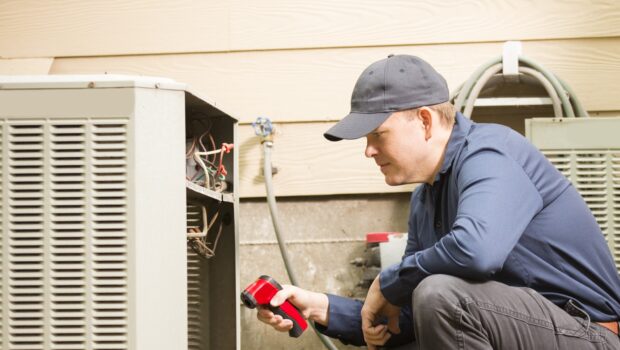When it comes to maintaining a healthy and comfortable living space, protecting the house from insect infestations is very important. Bugs can not only be a nuisance but also pose health risks and can cause significant damage to properties. This article will explore some effective and practical ways to safeguard properties from these unwanted intruders.
Keep a tidy and clean environment
The first line of defense against bug infestation is to maintain a tidy and clean home. Regularly clean up food crumbs and spills, as these can attract ants, cockroaches, and other pests.
Vacuum and sweep floors regularly, paying close attention to corners, crevices, and cracks where insects may hide or lay eggs. Keeping a clean environment will minimize the potential food sources for bugs and make the property less inviting to them.
Seal entry points
Insects can enter the structure through tiny cracks and gaps around doors, foundation walls, and windows. Conduct a thorough inspection of the house’s exterior and seal any openings using weather stripping or caulk. Installing door sweeps can prevent bugs from slipping in under the doors, while window screens with no tears will keep flying pests outside.
Want to know more about caulking? Check out this site to find out more.
Properly store food
Bugs, particularly pantry pests like beetles and ants, are attracted to food sources in the kitchen and pantry. Property owners should store food in airtight containers made of glass or strong plastic to prevent bugs from accessing it. They should not forget to also inspect and regularly clean the pantry to eliminate any potential hiding spots.
Manage moisture
Insects thrive in humid environments, which is why it is important to manage moisture levels in the house. Repair any leaks immediately, especially in plumbing, and makes sure there is proper ventilation in kitchens, basements, and bathrooms. Consider using dehumidifiers in places with high humidity to minimize the chances of attracting insects.
Trim vegetation and clear clutter
Overgrown vegetation, as well as clutter around the house, can create ideal hiding spots and entry points for bugs. Trim trees, shrubs, and bushes away from the property, ensuring a gap of at least a couple of feet between the exterior walls and vegetation. Regularly clear out yard debris and keep firewood away from the house to discourage insects from nesting near the house.
Practice proper waste management
Pests are opportunistic feeders and will happily take advantage of unsecured compost and waste. Use tightly sealed trash containers with lids and dispose of trash regularly. If the property owner does compost, they need to ensure the compost container is adequately contained and away from the house’s foundation.
Use natural repellents
Most natural remedies can repel insects without resorting to harsh chemicals. For instance, planting certain plants like mint, rosemary, and lavender around the house can deter insects. Citrus peels can also be placed in places prone to ant activity to discourage them from entering.
Regular inspections
Schedule regular inspections by professional pest control companies. These professionals can identify possible problem areas and treat the property with safe and targeted ways to prevent infestations. Early detection and preventive measures can save owners from significant headaches and expenses in the long run.
Want to know more about this topic? Visit sites like fliegle.de for info.
The importance of protecting the home from pests
Safeguarding property owner’s health
Insects can transmit and carry different diseases to humans. For example, mosquitos are notorious for spreading West Nile Virus, Zika virus, dengue fever, and malaria. Ticks can transmit Lyme disease, while cockroaches and house flies can contaminate surfaces and food, leading to gastrointestinal infections.
Protecting the home from pests’ means reducing the risk of exposure to these harmful pathogens and safeguarding the property owner’s health.
Preserving the home
Beyond the health hazards, bugs can inflict severe damage to the structure. Termites are infamous for silently eating away at wooden structures, causing costly and extensive damage to houses. Carpenter ants also pose a threat to wooden materials, compromising the structural integrity of homes.
Furthermore, silverfish and carpet beetles can wreak havoc on books, fabrics, and other valuables. By taking preventive measures, people can avoid potential property damage caused by bug infestations.
Maintaining sanitation and hygiene
Bugs are attracted to unsanitary and unclean environments, and their presence can be a sign of poor home hygiene. For instance, cockroaches are drawn to food scraps, damp areas, and grease. An infestation may indicate sanitation issues that need to be addressed immediately. By protecting the house from bugs, people are not only ensuring a pest-free environment but also promoting better overall hygiene.
Ensuring peace of mind
Living in a house infested with pests can be distressing and emotionally taxing. The constant sight of pests scurrying across the walls or floor can cause stress and anxiety. Sleep may be disrupted by the fear of insect bites or buzzing mosquitos. By taking preventive measures and protecting the structure, people can enjoy peace of mind, knowing that the living space is a haven free of unwelcome guests.
Minimizing respiratory problems and allergies
Bugs can trigger allergies and aggravate respiratory conditions like asthma. For instance, dust mites are common indoor allergens that can cause itching, respiratory distress, and sneezing. Additionally, stinging pests like bees and wasps can pose a severe threat to people with allergies to their venom. Keeping insects out of the house can lead to improved indoor air quality and minimize the risk of allergy and respiratory-related health issues.
Saving money on treatments and repairs
Addressing a full-blown infestation can be pretty costly. Termite treatments, property repairs, and pest control services can quickly add up. Investing in preventive measures and protecting the structure of insects can save people significant money in the long run. Regular inspection, maintenance, and sealing of potential entry points are cost-effective ways to reduce the risk of infestations.




